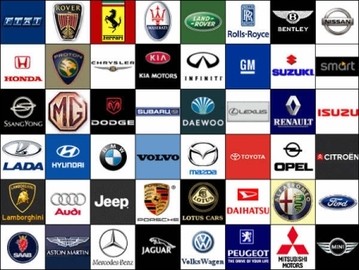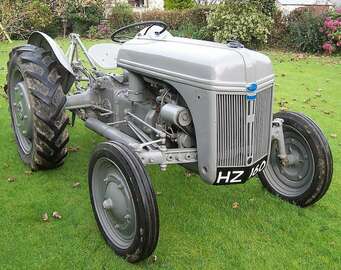AMI
Brand
Australian Motor Industries (AMI) was an automobile assembly firm that was significant in the early history of the automotive industry in Australia.
The origins of Australian Motor Industries can be traced back to 1926 when J.F. Crosby decided to invest in Eclipse Motors Pty Ltd of Melbourne. In 1929 the company secured the Victorian agency for Standard Motor Company's cars, then changed the company name to Talbot and Standard Motors, and began a steady period of expansion with the Standard marque through the 1930s. In 1952 the Crosby family formed a holding company, Standard Motor Products Ltd, in co-operation with the Standard Motor Company of England to assemble cars at their new assembly plant in Port Melbourne. The subsidiary company responsible for vehicle assembly was the Standard Motor Company (Australia) Limited.
Subject ID: 39361
MoreAustralian Motor Industries (AMI) was an automobile assembly firm that was significant in the early history of the automotive industry in Australia.
The origins of Australian Motor Industries can be traced back to 1926 when J.F. Crosby decided to invest in Eclipse Motors Pty Ltd of Melbourne. In 1929 the company secured the Victorian agency for Standard Motor Company's cars, then changed the company name to Talbot and Standard Motors, and began a steady period of expansion with the Standard marque through the 1930s. In 1952 the Crosby family formed a holding company, Standard Motor Products Ltd, in co-operation with the Standard Motor Company of England to assemble cars at their new assembly plant in Port Melbourne. The subsidiary company responsible for vehicle assembly was the Standard Motor Company (Australia) Limited.
Import tariffs on vehicles encouraged the growth of the Australian vehicle body building industry from the early 1920s. The tax concessions varied with the degree of local content.
In 1958 the company negotiated an agreement with Daimler-Benz to assemble and distribute Mercedes-Benz vehicles in Australia. In recognition of this new agreement the company was renamed Australian Motor Industries and a new subsidiary company was formed to handle the Mercedes Benz franchise.
Through its long association with the Standard Motor Company, AMI also held the franchise for Triumph cars and assembled Ferguson tractors through another subsidiary company of the group, British Farm Equipment. An extensive dealer network throughout NSW and Victoria saw Standard cars and Ferguson tractors sold side by side in country areas. The most popular car sold was the Vanguard model.
In October 1960, AMI signed an agreement with American Motors Corporation (AMC) to assemble the Rambler range of cars from complete knock down (CKD) kits. Another deal with Fiat was planned to replace the Ferguson tractors distributed by BFE. The Standard Motor Company had sold their tractor facility in Coventry to Massey Ferguson and focused on automobile production.
AMI ran into financial trouble during the Australian credit squeeze of 1961 and the company was forced to sell off many assets and vehicle stock to remain solvent. Part of the restructure resulted in the sale of their share in the Mercedes Benz franchise to the German parent company.
Other cars assembled by AMI included the Rambler range from American Motors and Triumph cars from Leyland Motors. Leyland had inherited shares in AMI when it had merged with Standard-Triumph International in 1961. During the early 1960s the foreign share of the automobile motor vehicle market was estimated to be 95%, and as the only sizeable producer with a local equity, AMI continued to manufacture overseas designs.
AMI assembled the Triumph Herald from 1959 to 1966 and produced some unique Australian models. The Triumph 2000/2500 range was assembled in Port Melbourne from 1964 to the mid-1970s.
By 1965, the demise of the Standard Vanguard and the loss of assembly rights for Mercedes-Benz vehicles left AMI with additional capacity to assemble Rambler and Triumph.
Starting in 1960, AMI assembled a broad range of AMC cars, all with right-hand drive and carried the Rambler brand name. This meant that Australians could purchase a Rambler Javelin, AMX, Hornet, Rebel, or Matador long after the Rambler marque was dropped from use on the equivalent U.S.-market models.
Complete knock down kits were shipped from AMC's Kenosha, Wisconsin facility (all knock-down kits to all assembly operations were from Kenosha), but the Australian cars were assembled with a percentage of "local content" to gain tariff concessions. This was done using parts and components (such as seats, carpet, lights, and heaters) from local Australian suppliers. AMI specified what parts were not to be included in the unassembled kits sent by AMC. Other necessary parts specified by the assembler were boxed and shipped for assembly at the final destination in Australia. It is unknown exactly how many parts were included to be installed by the assembly operation, that varied with each operation. Outside colors were chosen by AMI and were the same as used on AMI assembled Triumph cars of that period. The distinctive AMI exterior emblems were used on Ramblers, as well as Triumph cars assembled by AMI from 1968 onward.
Subject ID: 39361
Subject ID: 39361

